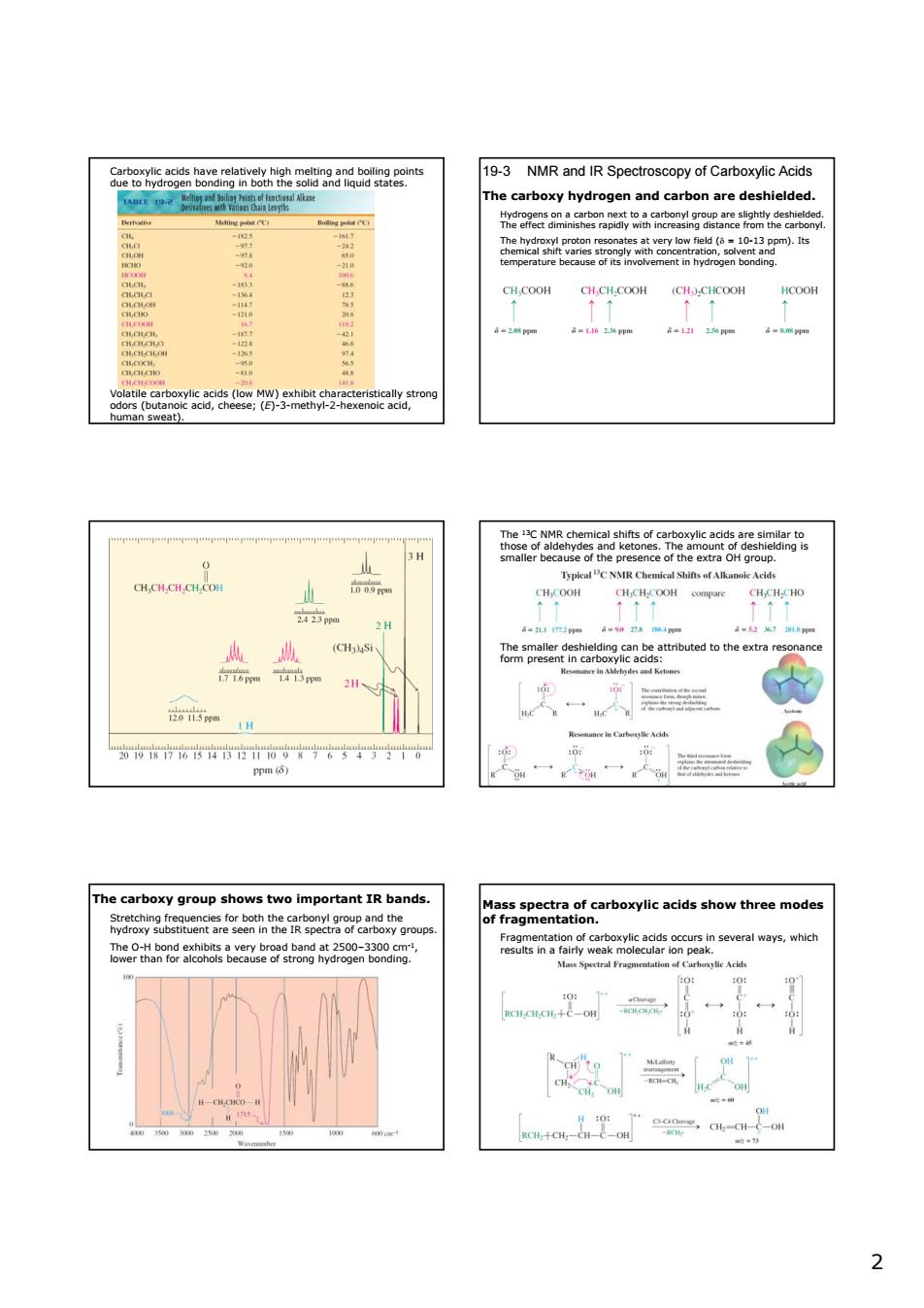正在加载图片...

19-3 NMR and IR Spectroscopy of Carboxylic Acids The carboxy hydrogen and carbon are deshie 9品 0 CH.CH.CH.CH.COR 822to咖 一一 The carboxy group shows two important IR bands. stretching frequences for both the carbonyl group and the 22 Carboxylic acids have relatively high melting and boiling points due to hydrogen bonding in both the solid and liquid states. Volatile carboxylic acids (low MW) exhibit characteristically strong odors (butanoic acid, cheese; (E)-3-methyl-2-hexenoic acid, human sweat). 19-3 NMR and IR Spectroscopy of Carboxylic Acids The carboxy hydrogen and carbon are deshielded. Hydrogens on a carbon next to a carbonyl group are slightly deshielded. The effect diminishes rapidly with increasing distance from the carbonyl. The hydroxyl proton resonates at very low field (δ = 10-13 ppm). Its chemical shift varies strongly with concentration, solvent and temperature because of its involvement in hydrogen bonding. The 13C NMR chemical shifts of carboxylic acids are similar to those of aldehydes and ketones. The amount of deshielding is smaller because of the presence of the extra OH group. The smaller deshielding can be attributed to the extra resonance form present in carboxylic acids: The carboxy group shows two important IR bands. Stretching frequencies for both the carbonyl group and the hydroxy substituent are seen in the IR spectra of carboxy groups. The O-H bond exhibits a very broad band at 2500–3300 cm-1, lower than for alcohols because of strong hydrogen bonding. Mass spectra of carboxylic acids show three modes of fragmentation. Fragmentation of carboxylic acids occurs in several ways, which results in a fairly weak molecular ion peak